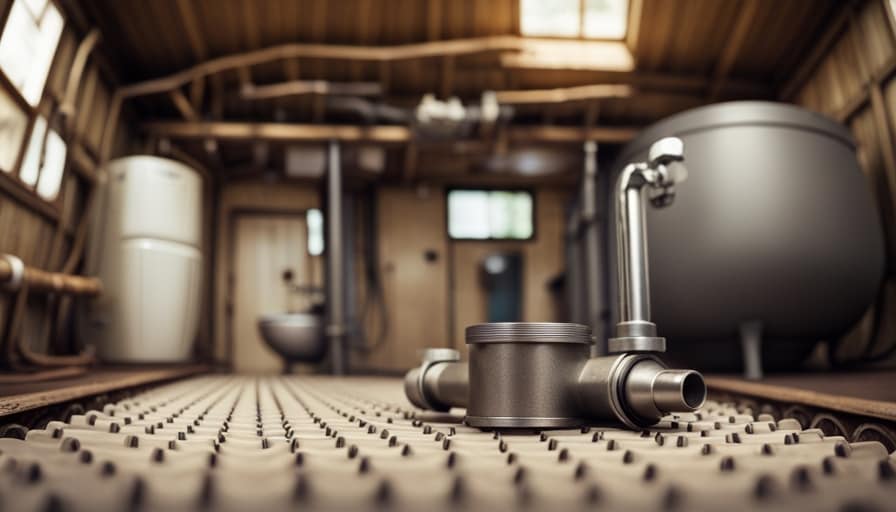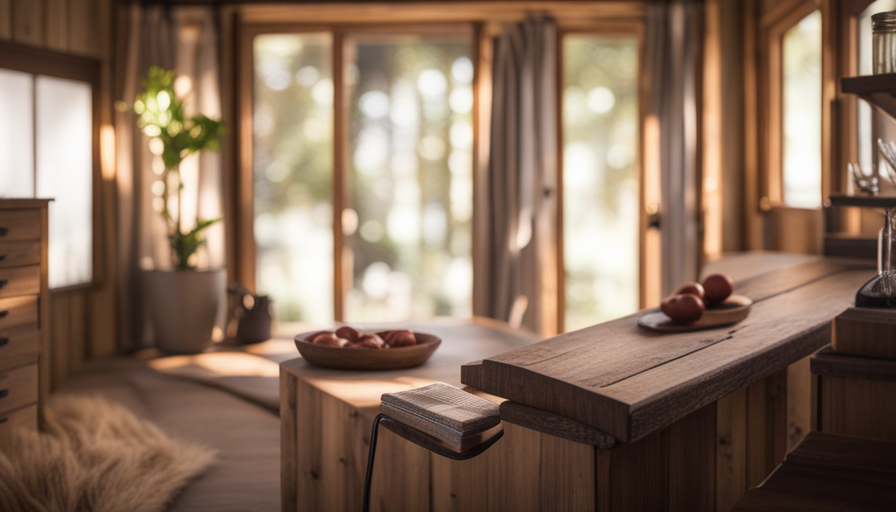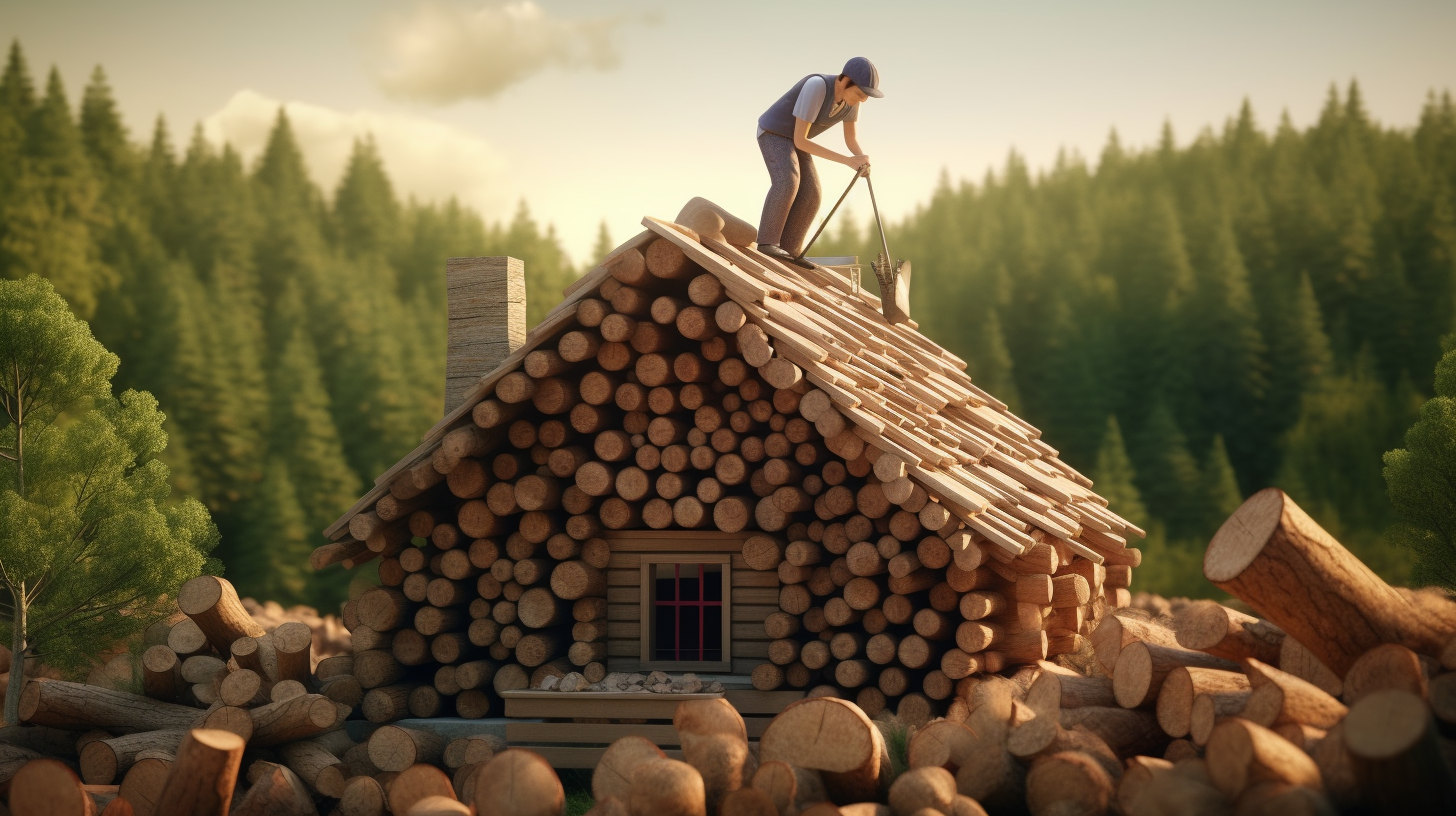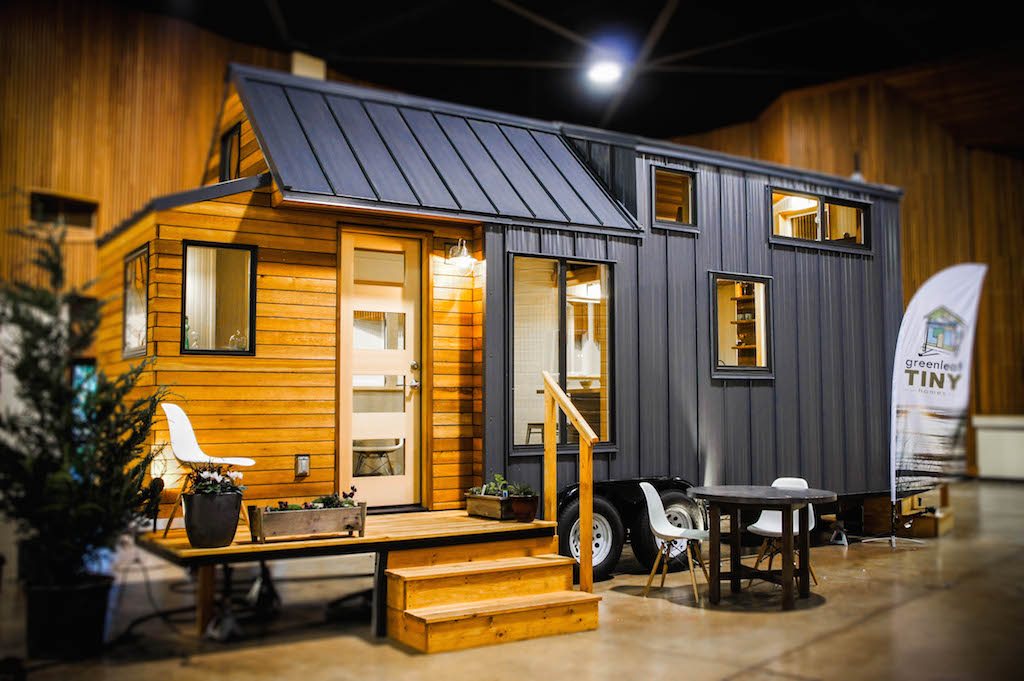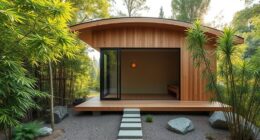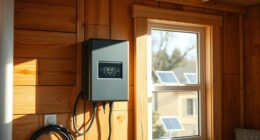I am enthusiastic about investigating how Eugene, Oregon is addressing the issue of affordable housing by permitting tiny house villages.
In this article, we will delve into the reasons behind Eugene’s decision, including the sustainable living and environmental benefits, the support and collaboration of the community, and the role of local government.
Join me as we discover how Eugene is serving its residents by providing innovative and practical housing options.
Key Takeaways
- The affordable housing crisis in Eugene has led to a high demand for affordable housing and limited supply, causing housing instability and homelessness.
- Tiny house villages in Eugene offer affordable and sustainable housing options, promoting social integration, access to services, and self-sufficiency.
- Living in tiny houses encourages a minimalist lifestyle and utilizes off-grid systems, contributing to sustainable living and environmental benefits.
- Local government in Eugene plays a crucial role in allowing and supporting the development of tiny house villages through zoning regulations, policy development, and community support.
The Affordable Housing Crisis in Eugene
I’m experiencing firsthand the devastating effects of the affordable housing crisis in Eugene.
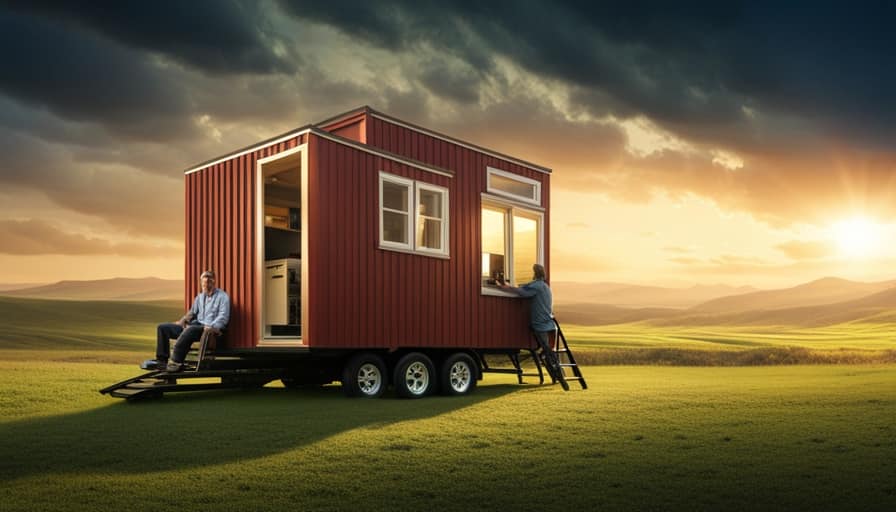
The housing market in Eugene has become increasingly unaffordable, leaving many individuals and families struggling to find suitable and affordable housing options. The cost of housing has skyrocketed, outpacing the growth of wages and making it difficult for people to make ends meet.
This has resulted in a high demand for affordable housing and a limited supply, exacerbating the crisis. Eugene’s housing market has become highly competitive, with rental prices soaring and home ownership becoming increasingly out of reach for many.
The lack of affordable housing options is causing individuals and families to face housing instability, homelessness, and a decline in their overall quality of life.
Addressing the issue of housing affordability in Eugene is crucial to ensuring that everyone in the community has access to safe and affordable housing options.
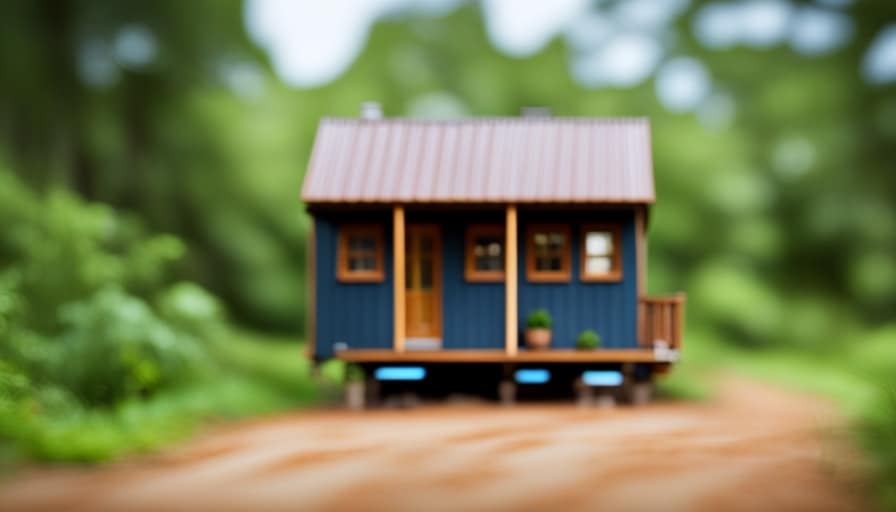
Addressing Homelessness Through Tiny House Villages
How can tiny house villages effectively address homelessness in Eugene, Oregon?
Tiny house villages present innovative solutions to address homelessness by providing affordable and sustainable housing options for individuals experiencing homelessness. These villages consist of small, self-contained homes that offer residents a safe and stable place to live.
By offering a sense of ownership and privacy, tiny house villages promote social integration and a sense of community among residents. They provide a supportive environment where individuals can access necessary services and resources to help them transition out of homelessness.
Moreover, tiny house villages encourage self-sufficiency and empowerment through the provision of communal spaces, such as shared kitchens and community gardens, fostering social interaction and collaboration.
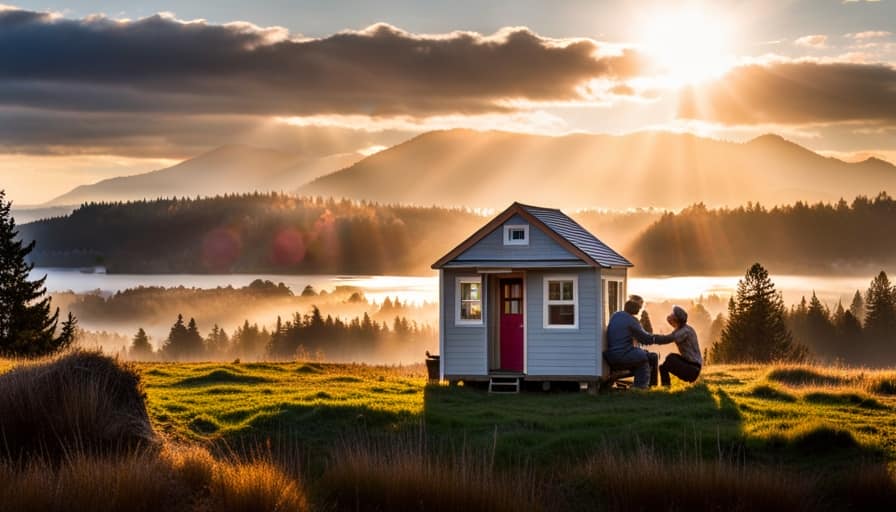
This approach to addressing homelessness promotes dignity and respect for individuals while offering a pathway to long-term stability.
Sustainable Living and Environmental Benefits
Living in a tiny house village allows for a more sustainable lifestyle, and it also offers numerous environmental benefits. Here are some reasons why:
-
Minimalist lifestyle: Living in a tiny house encourages a minimalistic approach to life. With limited space, people learn to prioritize their belongings and reduce unnecessary consumption. This mindset promotes sustainability by reducing waste and resource consumption.
-
Off-grid living: Many tiny house villages utilize off-grid systems, such as solar panels and rainwater collection, to meet their energy and water needs. This reduces reliance on traditional utilities and minimizes the environmental impact.
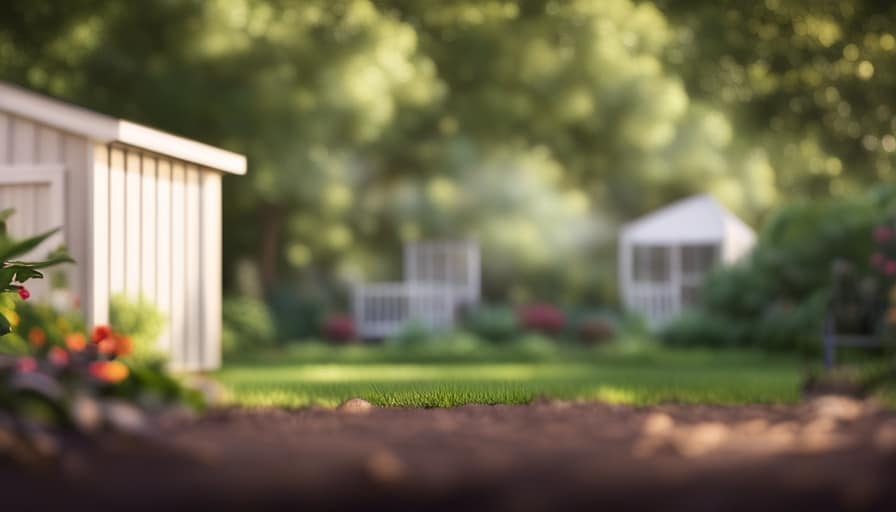
-
Reduced carbon footprint: Tiny houses have a smaller footprint compared to traditional homes. They require less energy for heating, cooling, and maintenance, resulting in lower carbon emissions. Additionally, tiny house villages often promote sustainable transportation options like biking or public transit, further reducing carbon emissions.
Community Support and Collaboration in Eugene
While living in a tiny house village in Eugene, I have witnessed the incredible community support and collaboration that exists among the residents. The village fosters a strong sense of community engagement, where individuals come together to support and uplift one another. Residents collaborate on various projects and initiatives, working towards innovative solutions that benefit the entire community.
To give you a clearer picture, here is a table highlighting some examples of community engagement and collaborative efforts in our tiny house village:
| Community Engagement | Innovative Solutions |
|---|---|
| Regular community meetings to discuss village improvements | Implementation of communal gardens to promote sustainability and food security |
| Volunteer-led workshops and skill-sharing sessions | Development of a neighborhood watch program to ensure safety and security |
| Joint fundraising efforts to support village maintenance and expansion | Creation of a shared resource library for residents to borrow tools and equipment |
The community support and collaboration in our tiny house village not only create a strong sense of belonging but also contribute to the overall well-being and success of the residents.

The Role of Local Government in Allowing Tiny House Villages
Having worked closely with the local government in Eugene, I’ve seen the instrumental role they play in allowing tiny house villages to exist and thrive. The local government’s role in enabling these villages involves several key aspects:
-
Role of Zoning: The local government plays a crucial role in determining the zoning regulations that govern land use within the city. By creating specific zoning categories that allow for tiny house villages, they provide a legal framework for these communities to be established.
-
Public Opinion: The local government takes into account the opinions and feedback of the community when making decisions regarding tiny house villages. They engage in public consultations and seek input from residents to ensure that the establishment of these villages aligns with the desires and needs of the community.
-
Policy Development: The local government develops policies and guidelines to regulate the establishment and operation of tiny house villages. These policies address important aspects such as health and safety standards, environmental sustainability, and community integration.
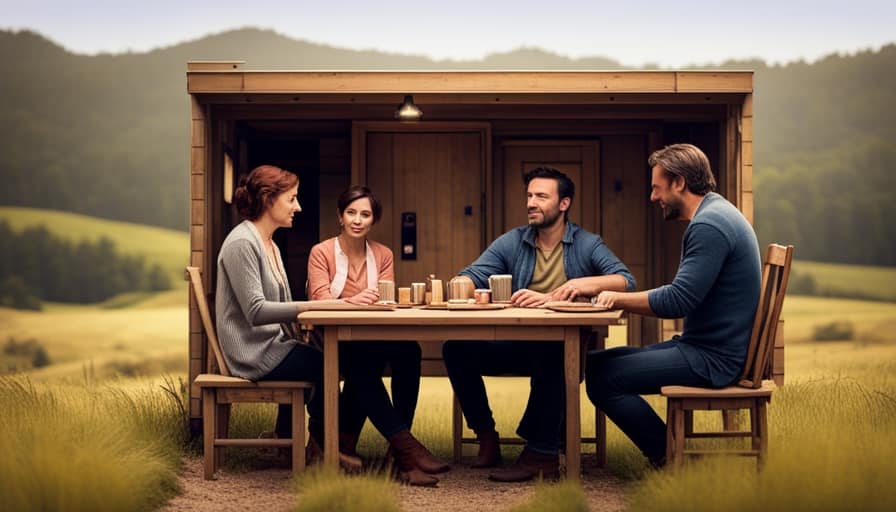
Frequently Asked Questions
How Many Tiny Houses Are Typically Included in a Tiny House Village in Eugene?
Typically, a tiny house village in Eugene includes around 10 to 15 houses. Eligibility criteria usually require individuals to be experiencing homelessness. Funding for these villages often comes from a combination of government grants and community donations. Amenities vary but can include shared kitchens, bathrooms, and community spaces. Future expansion plans aim to create more villages to address the affordable housing crisis. Compared to other options, tiny house villages provide a unique and innovative solution to homelessness in Eugene.
Are There Any Specific Eligibility Criteria for Individuals to Qualify for Housing in a Tiny House Village?
To qualify for housing in a tiny house village in Eugene, individuals must meet specific eligibility criteria. The application process involves fulfilling requirements such as income limits, background checks, and demonstrating a need for affordable housing.
How Are the Tiny House Villages in Eugene Funded?
Tiny house villages in Eugene, Oregon are funded through a combination of government grants, private donations, and community support. These funding sources help provide affordable housing options and promote a sense of community within the village.
What Kind of Amenities and Services Are Available to Residents in the Tiny House Villages?
Living in a tiny house village in Eugene, Oregon comes with a range of amenities and services. Residents have access to community engagement opportunities, such as shared gardens and common spaces, as well as environmental sustainability initiatives like composting and recycling programs.
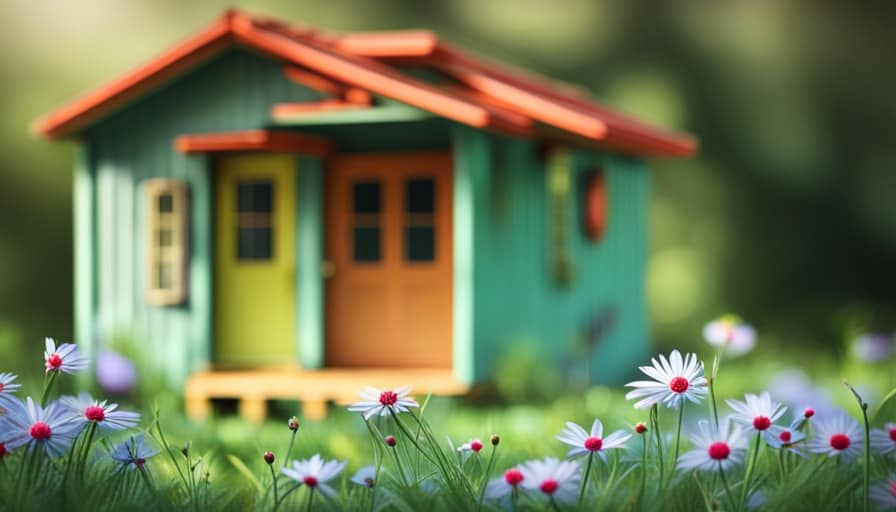
Are There Any Plans to Expand the Number of Tiny House Villages in Eugene in the Future?
There are plans to expand the number of tiny house villages in Eugene in the future. The city has received a lot of community support for these projects, making future expansion more likely.
Conclusion
In conclusion, Eugene, Oregon’s decision to allow tiny house villages is a beacon of hope in the darkness of the affordable housing crisis.
Like a tiny seed growing into a mighty oak, these villages provide a sustainable solution to homelessness and promote environmentally-friendly living.
With the support and collaboration of the community, Eugene’s local government has taken a bold step towards creating a more inclusive and compassionate society.
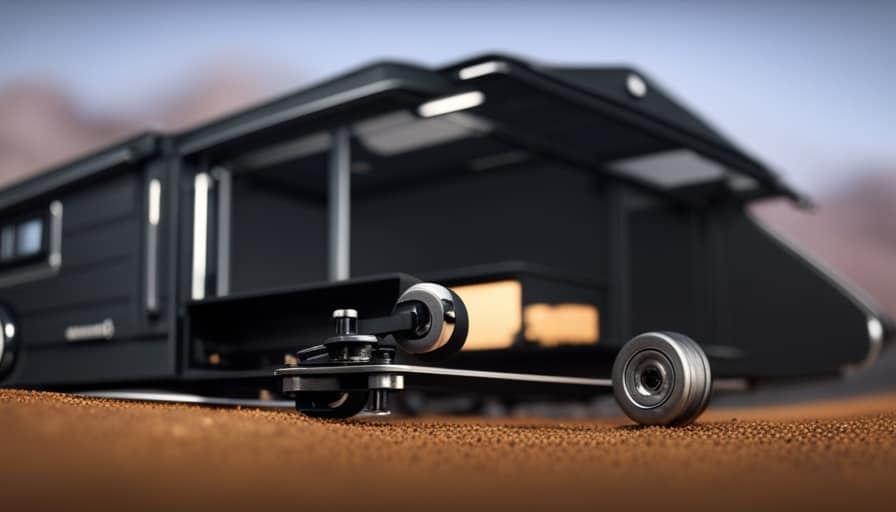
Let’s continue to nurture this seed of change, so that it may blossom into a brighter future for all.
I’m Theodore, and I love tiny houses. In fact, I’m the author of Tiny House 43, a book about tiny houses that are also tree houses. I think they’re magical places where imaginations can run wild and adventures are just waiting to happen.
While tree houses are often associated with childhood, they can be the perfect adult retreat. They offer a cozy space to relax and unwind, surrounded by nature. And since they’re typically built on stilts or raised platforms, they offer stunning views that traditional homes simply can’t match.
If you’re looking for a unique and romantic getaway, a tree house tiny house might just be the perfect option.
